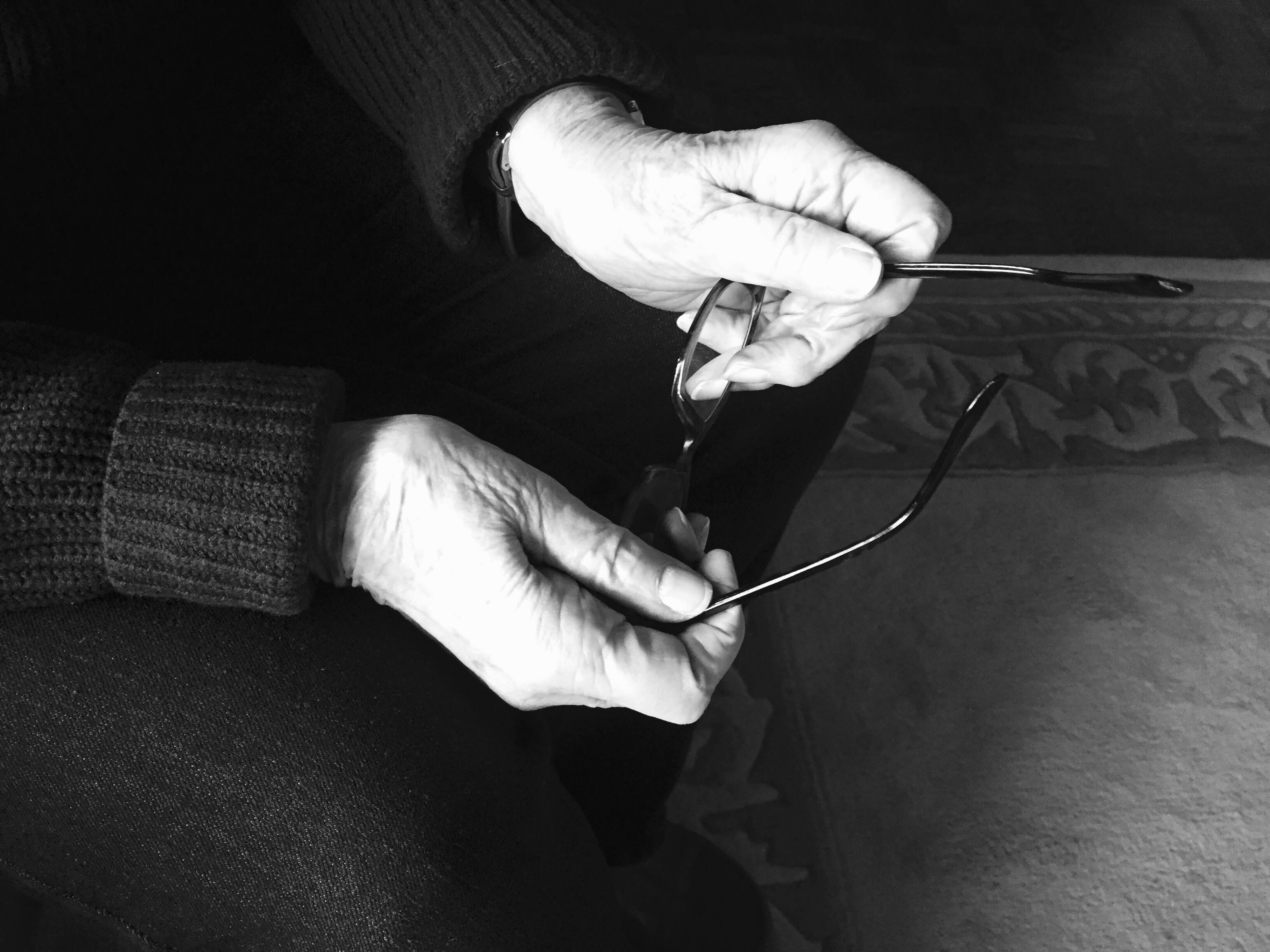“I never take it off,” Sari Stowel says, pointing to the discrete silver necklace that hangs around her neck. At the end of the chain is a small pendant that tucks nicely under the collar of her shirt. “It’s inconspicuous,” Stowel says.
Stowel is 88 and lives in the Chartwell Rockcliffe Retirement Residence, in Ottawa. She moved in when she reached a point in life when she felt she probably shouldn’t be living alone. She, and every other resident at Chartwell Rockcliffe, wear the same silver chain with a small pendant, just one example of what has come to be known as “wearable technology.” The pendant functions as a medical alert sensor. When the small sensor button on the pendant is pushed by its user, an alarm signals and a message is transmitted electronically to a remote server. The message is in turn relayed to care staff at the residence who are able to locate the necklace, and its user.
“It’s great,” Stowel exclaims. “One night I fell asleep and I turned onto my side and it triggered the alarm. A nurse came in the middle of the night. She woke me up and said ‘I called’ – I said I didn’t. She figured out that I had pressed my necklace under my arm when I rolled over,” says Stowel, laughing at the mistake.
The simplicity of the device is what appeals to Stowel, who acknowledges that at her age, she doesn’t want extra things to keep track of her. “You get everything mixed up,” Stowel says. She admits that the pendant is the only form of technology that she uses and wearing her necklace is enough for her. “It’s enough to keep track of old people themselves, not to mention trying to remember things they often don’t,” she says. Stowel says she has no privacy concerns with wearing her medical alert necklace. In fact, she’s pleased the nurse woke her up that night. “I know it works,” she says. “I’ve never had to use it because of a fall, thank goodness.”
For Stowel, the benefits outweigh any risks to her privacy. She says she feels safe and protected by her necklace and its communicating pendant.
Whether Stowel or all the other residents of the Chartwell Rockcliffe Residence are fully aware of it, they are now part of the leading edge in wearable technology.
While wearables have applications across the generations – for fitness buffs, for younger people undergoing medical treatment – the leading edge could be among the aged.
Canada’s population is rapidly aging and the increased number of seniors will put pressure on Canada’s health care system. Governments everywhere are keenly aware of the need to keep patients out of hospitals and retirement homes, and reduce healthcare costs. As a result, there is a push for innovation in health care to mitigate costs by using resources effectively.
According to the Canadian Institute for Health Information, the possibility of technological change could create cost savings due to process efficiency.
Advocates maintain that wearable technology is a relatively easy way to collect data. In the grand scheme of things, the devices are cheap and easy to use. Many devices, such as a Fitbit, offer quantifiable goals and being able to keep track of accomplishments provides incentives to a patient for self-improvement. The arrival of wearable technology in both the consumer market and health care represents an emerging trend toward personalized medicine as individuals manage their health information.
Perhaps it is inevitable that our obsession with health and fitness would at some point intersect with another ubiquitous aspect of modern life – technology.
